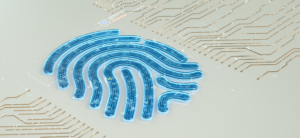Data masking is a technique for modifying data that allows authorized people or applications to use personal data while preventing or limiting its exposure or use by unauthorized people or applications, in an effort to improve data security and privacy. It is also sometimes called data obfuscation.
There are several types of data masking, each with its advantages and disadvantages.
Static Data Masking
Static data masking (SDM) is when sensitive information is permanently replaced by altering data at rest. In such a case, developers and marketers could be working on a dataset that no longer reflects the real world in an important way.
Dynamic Data Masking
Dynamic data masking replaces sensitive data in transit, leaving the original at-rest data unchanged and unmasked, and so is less likely to suffer problems of model drift or data drift. But if data is rapidly changing, there can still be a risk of divergence from reality in important ways, or missed insights and opportunities. Dynamic data masking happens when programs are running and is performed on-demand as needed. In dynamic data masking, the original, complete data set is unaffected and stored unmasked.
On-the-Fly Data Masking
On-the-fly is a type of data masking that uses the extract-transform-load (ETL) method to transform sensitive data from one data source or environment, mask it, and send to another data source/environment so that the resulting masked data can be shared or used. The original data remains unmasked, while the resulting masked data is used in the testing or development environment, or in other applications that require masked data.
History of Data Masking
The need for data masking has evolved over the years. What started out as a technique used mostly internally by software developers, data scientists, and software testers has become widespread, particularly in organizations that want to separate their test environments from their production database. Many companies now offer data masking capabilities, either in standalone privacy protection apps, or as part of a larger product such as a customer data platform (CDP).
How Big is the Data Masking Market?
The total value of the data masking market is at $347.3 million in 2016, and is projected to reach $767.0 million by 2022, at a Compound Annual Growth Rate (CAGR) of 14.8 percent. Many attribute this growth to increasing privacy protection concerns and regulations, as well as rapidly expanding volumes of customer data in internal and cloud environments that must be managed and secured.
Read more: How Data Masking Keeps Customer Data Private, Safe and Secure




